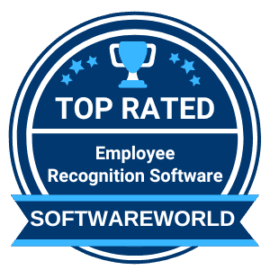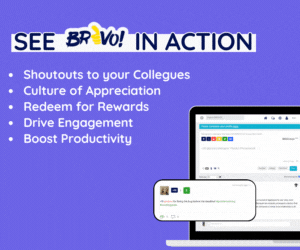
The relationship between culture, experience, engagement, and motivation can be better described as the workplace’s How, What, When, and Why.
Culture | How
One of the most critical factors in creating an effective work environment is establishing a solid corporate culture.
As a result of all the culture’s components, people have better experiences.
Experience | What
Corporate culture experiences include:
- A productive work environment.
- Supportive leadership.
- Personal and professional growth and development.
- A sense of personal accountability.
All of these factors serve to enhance the previously acquired knowledge.
Engagement | When
Next, a culture of experiences, employee empowerment, career progression, alignment with the corporate vision, relationship building, and employee well-being results from a good culture paired with positive experiences.
Motivation is a byproduct of being fully engaged in one’s work.
Motivation | Why
Finally, when all of the criteria mentioned earlier are accomplished, employees are ecstatic because they feel appreciated, fulfilled, and empowered.
This is the final piece to the puzzle regarding retaining top talent.
1. The company’s culture can be summed up as its way of life

Consistent, observable patterns of behavior and attitude that define how employees engage with the organization and each other are known as culture.
“How we do things around here” is what defines a culture. Gallup
“Tacit social order” is defined as a company’s “collective of practises, shared values, and beliefs, and expressed via its purpose,” which are all examples of its culture.
Organizations can achieve positive organizational outcomes with a robust and inclusive culture.
Elements of culture can be further categorized into theoretical and experiential.
Theoretical includes:
- Vision
- Mission
- Policies
- Strategies
- Core Values
Experiential include:
- Behaviors
- Attitudes
- Relationships
- Core values and norms
- Practices
2. When it comes to a company’s experience, it’s all about what it can give its employees

Gallup defines employee experience as the journey an employee makes with your company.
Employee experience is the total of all the interactions an employee has with the organization and its workplace culture during their time there.
Your company’s ability to attract and retain experienced employees is one of its greatest assets. Bersin
“High-performing employees” are more likely to come from organizations that have a strong culture and a higher purpose that aligns with their employees’ career aspirations.
3. When experience coincides with culture, employee engagement results

Engagement occurs when a firm can establish the perfect blend of culture and employee experience.
When a company cares, employees are more likely to be engaged. Forbes
“Report 22 percent higher productivity” in businesses with a higher percentage of active or highly productive personnel.”
There are two types of engagement drivers: those that have occurred in the past and those that have yet to occur.
Individual goals, job satisfaction, performance management, annual review, and competitive assessment can all be found in the past section.
However, under the future, purpose, individual and team goals, and advancement in one’s profession in both directions – horizontal and vertical.
Read More: Why Are Bravo Rewards Important For Organizational Culture?
4. The reason your staff is enthused is because of motivation

Employees choose to work for a company because they are motivated.
Because of employee motivation, organizations can keep up to two-thirds of their workforce.
“A 20 percent gain in job productivity” has been noticed in organizations that routinely excite and enthuse their staff.
The employee’s desire and willpower might be intrinsic or extrinsic motivators, depending on the company’s offerings.
Conclusion
You can learn so much about an organization’s culture by looking at how it treats its employees, how they interact with their coworkers, and how they work toward its goals.
Organizational goals can only be met if all four pillars of the strategic plan align.
While the Great Resignation is taking a toll on businesses around the country, you have the power to turn the tides by attracting, developing, and retaining the best and brightest.
You only need a platform to help you cultivate company culture, increase employee engagement, organize memorable experiences, and drive your team members.
Using Bravo, you can meet all of your company’s employee reward and engagement needs.
Book a demo now!
FAQs
What are engagement and motivation?
In contrast to motivation, a person’s desire to act on their feelings, engagement is a sense of purpose, belonging, and dedication to an organization. Employee motivation and engagement go hand in hand, with the former serving as a springboard for your staff to deliver their best work.
Does engagement lead to motivation?
Employees who are highly driven by their work are highly engaged. They are enthused about using their abilities and are dedicated to learning new ones. The financial line of any firm can benefit significantly from a motivated workforce.
What comes first, engagement or motivation?
Motivation is the will and desire to act on such feelings, whereas engagement is the sense of purpose, belonging, and dedication to a company. Employee motivation and engagement go hand in hand, with the former serving as a springboard for your staff to deliver their best work.






